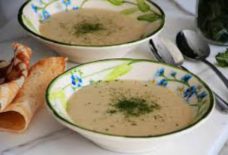This Muslim-American Life: Allah and the Arts
With bold, messages on contemporary religious, social and political issues, young Muslim-Americans are stepping onto the stage and into the studio.
These second-generation adults — once destined for research labs and business offices and subject to the high expectations of their foreign-born parents — now live in a 21st-century Muslim community that’s growing more open to the arts. It’s taken time for such immigrant populations to recognize how artistic expression can positively impact how a community is perceived, both by others and by its own.
“They’ve realized that arts and culture, media and journalism, are civic engagement,” said Wajahat Ali, a 29-year-old Pakistani-American playwright. “Art can serve as a potent and powerful bridge and medium. It can really push things forward about creating a dialogue about race, politics, religion and stereotyping.”
With the discrimination, blame and misunderstanding surrounding American Muslims after the September 11 attacks, some turned to music, theater and art with their frustrations. These forms of expression, they say, can showcase universal themes from a Muslim-American perspective.
And 9/11 backlash didn’t just inspire the ranting lyrics of the growing Muslim punk movement (story here), it also led Wajahat to write his play, “Domestic Crusaders,” which portrays a Muslim-American family faced with generational gaps and cultural conflicts.
He was a 21-year-old student-activist at the University of California at Berkeley when he began the script for writing seminar in 2001, immediately following the terrorist attacks.
Next month, on September 11, it will premiere at an off-Broadway theater on the Lower East Side of New York, a triumph after years of pitching and marketing the two-act performance to hesitant theater directors across the country.
“I knew it would take time for the times to catch up with the play,” said Wajahat, a Pakistani-American raised outside of San Francisco. “But audiences, they’ve always been ready for it.”
As one of the first major works of its kind, “Domestic Crusaders,” debuts into the still-quite-empty canon of Muslim-American theater. With the enthusiasm of second-generation Muslim-Americans, and their parents’ broadening minds, artists across media say that’ll soon change.
The Council on American-Islamic Relations, or CAIR, held its first art showcase earlier this month, auctioning off pieces done by mostly young, Muslim-American graphic designers and painters.
To most eyes, they look like curls, swirls, squiggles and dots. But for those who can read Arabic calligraphy, the lines painted whimsically within colorful birds or printed as crisp, graphic patterns display Quranic verses or names for God.
“This one is ‘bismillah’ (God Most Gracious)… this one is ‘alhumdulillah’ (Praise be to Allah)…,” explains Ibrahim Hooper, CAIR’s director of communications, pointing to the pieces displayed on the walls of the organization’s headquarters in southeastern Washington, D.C.
Muslim artists typically avoid depicting people, especially religious figures, a holdover from the religion’s iconoclast history and an effort to prevent the veneration of images over God. Instead, they favor patterns, script and arabesque designs.
Huda Totonji, a 29-year-old artist trained in Arabic calligraphy, was among the dozen-or-so artists showing off their work at the auction. She incorporates Quranic verses into her paintings of nature birds in nature because all living things display the glory of God, she said.
“I’m combining my Islamic background with Western traditional painting in a way that celebrates the two cultures,” said Huda, pictured right, who was born and raised in Saudi Arabia, but went to college in the U.S. “Islam has always been an inspiration. I have dreams that I base my work on.”
While plenty of art galleries in the U.S. display ancient Islamic art — hand-woven tapestries and painted earthenware pottery dating back to the time of the prophet Muhammad in the 7th century — there’s somewhat of a void for more recent works by Muslim-Americans.
“I have noticed also that there seem to be many more venues for Jewish and Christian artists in this country to show their work than there are for Muslims,” said Menachem Wecker, a freelance writer on religious art. He covers the intersection between faith and art, mostly focusing on Jewish, Christian and Islamic works on his blog, Iconica.
“I think the gap between artist who believes and artist who does not believe is much larger than the gap between artists of different faiths,” said Menachem, a Jewish artist and graduate of Yeshiva University in Manhattan.
Art, be it in a gallery, on stage or screen, has long been seen as a way to connect people of different backgrounds to universal emotions and the so-called human story.
“(Our mission) is to create a comfortable environment that can bring people together across lines of diversity to really celebrate the things that unite us and also learn about experiences that are different than our own, through the arts,” said Cristal Chanelle Truscott, a 30-year-old playwright and the artistic director for Progress Theatre, a performance troupe that blends elements of African-American culture with elements of contemporary art, music and academia.
“People’s particular stories appeal to universal sensibilities,” she said, “and people may assume at first that they won’t be able to connect and then you get here and you can recognize that universal thread of humanity.”
Kate Shellnutt
Global Arab Network


